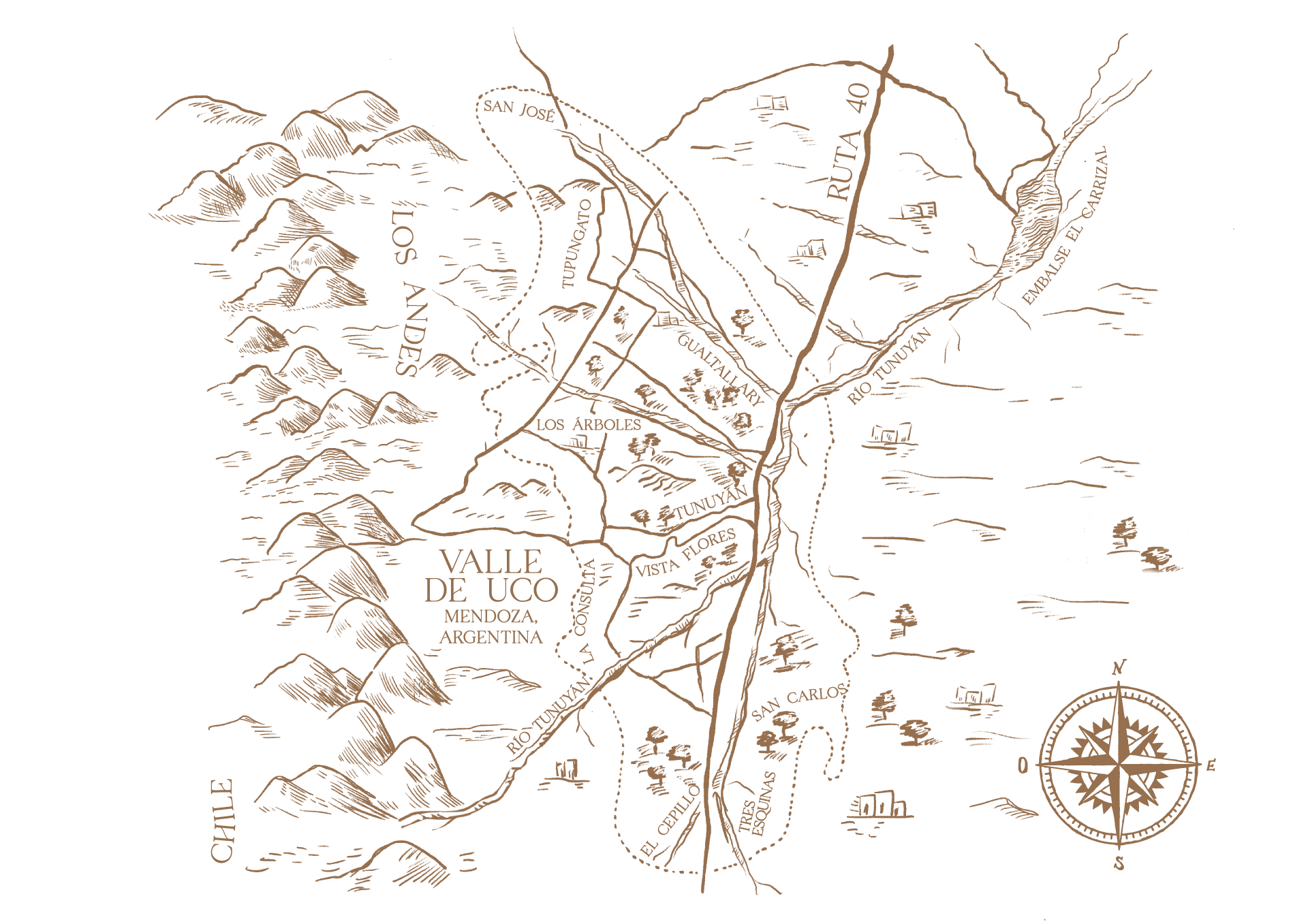Amid the wild flora and pristine snowmelt streams, permeated with aromas of jarilla, thyme, rue and spices, a natural oasis rises amid the foothills of the Andes. Despite its high altitudes, it has come to be known as the Uco Valley.
Due to elevations between 3,600 and 4,200 feet above sea level (1100 to 1300 meters), the vineyards of Uco Valley endure summers with diurnal temperature variances of up to 55°F from day to night. This extreme climate forces vines to work harder, driving colour and fruit intensity into the grapes.
It is here one finds Texto Súbito vineyards, surrounded by its dedicated network of small family growers in Tupungato, Gualtallary, Tunuyán, La Arboleda, Vista Flores, and other world-class Uco Valley subregions.
Selecting and blending the best fruit from each harvest, the Texto Súbito winemaking team crafts wines of outstanding terroir transparency through minimum intervention practices—wines that reveal the essence of Uco Valley’s mountain oasis in every glass.


